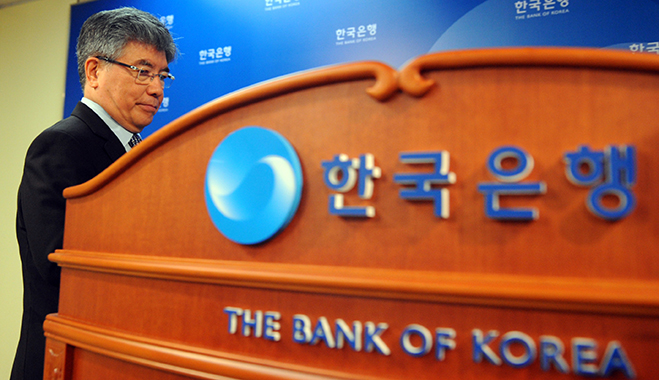
In keeping with what many analysts predicted, the Bank of Korea (BoK) has cut its key lending rate in a bid to revive domestic growth and better consumer sentiment. The decision, which marks the first cut in 15 months, will see the rate reduced to 2.25 from 2.5 percent, and follows a string of measures designed to lift the country’s GDP.
“In the domestic financial markets, after having risen substantially owing chiefly to the government’s announcement of economic policies, stock prices have fallen back somewhat due for example to geopolitical risks. The Korean won has depreciated under the influence of the US dollar’s strength globally, and long-term market interest rates have fallen,” wrote the BoK in a statement.
Some argue…that the bank’s rate cut has come too soon after the government’s stimulus package
The cut is the largest of its kind since November 2010 and comes less than a month after the government unveiled a $40bn stimulus package to aid SMEs and offset rising unemployment. After quarterly GDP growth slowed to 3.6 percent in the second quarter after 3.9 percent in the first, and the annual growth forecast was revised from four to 3.8 percent by the BoK, the country’s policymakers are hoping the measures add a much needed dose of momentum in the second half of the year.
“In Korea, exports have maintained their buoyancy but the Committee judges that improvements in domestic demand, which had contracted due mainly to the impacts of the Sewol ferry accident, have been insufficient, and that the consumption and investment sentiments of economic agents also continue to show sluggishness,” according to the BoK.
Domestic demand has been sluggish since the Sewol ferry tragedy in April, which cost 304 lives, and policymakers have since rallied to boost consumer sentiment and, therefore, spending. Some argue, however, that the bank’s rate cut has come too soon after the government’s stimulus package, and that not enough time has been given before the central bank has proceeded to pile on additional measures.


